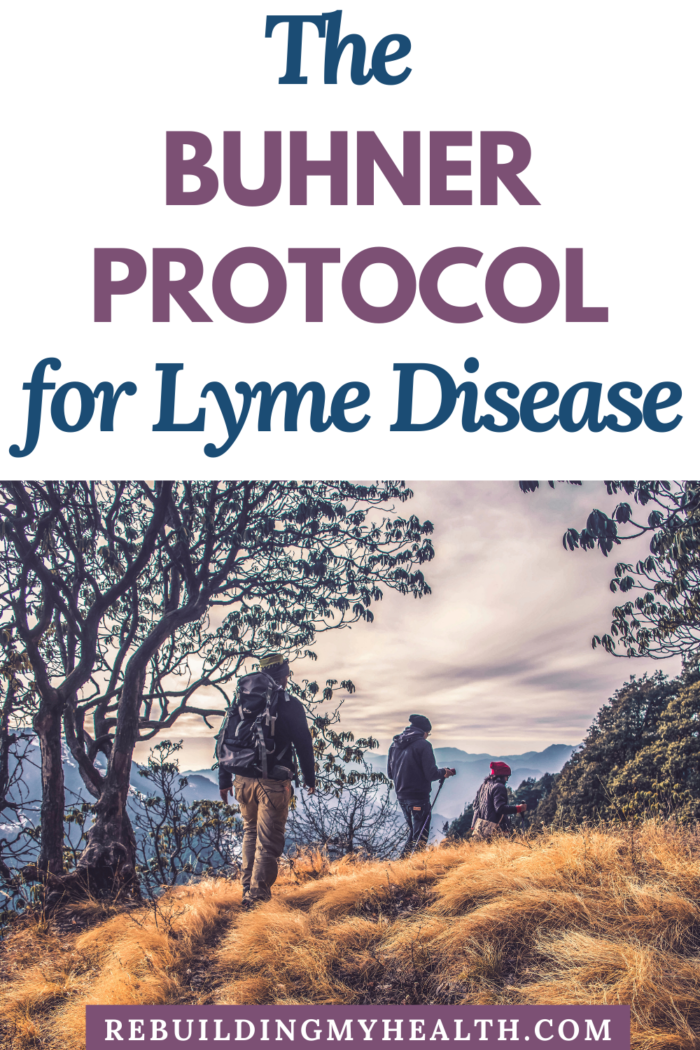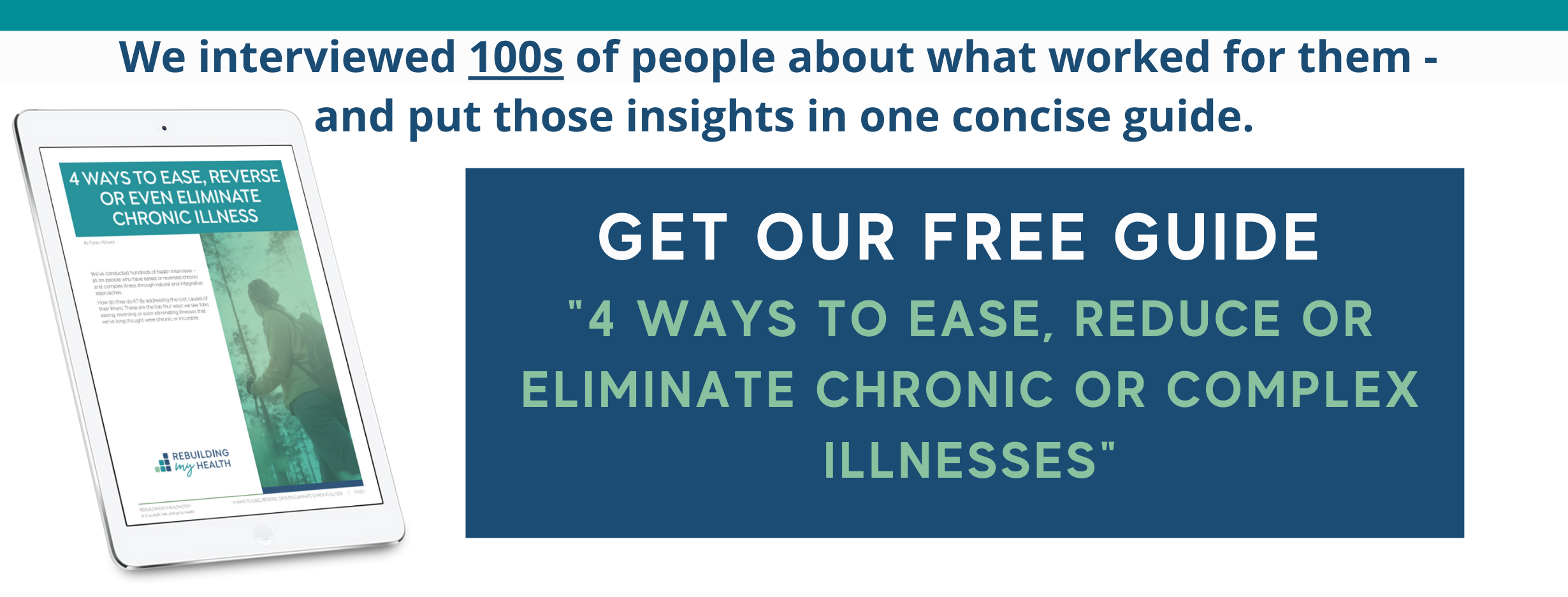Active College Student Beats Lyme Disease after Trading Antibiotics for Herbs
“I’ve had full remission of any Lyme disease symptoms for about six months. I am pain-free and healthy. I am stronger and healthier than I was even before I got sick.”
– Alex
In lawns across America, Japanese Knotweed is seen as an invasive species that threatens to crowd out native species and has the power to break through concrete.
But for Alex and many like him, it means something else entirely. It’s a sacred plant with life-saving powers.
Before 2017, the 22-year-old college student had never heard of the plant. But when the avid outdoorsman contracted Lyme disease and became bedridden overnight, it was Japanese Knotweed and other herbs that ultimately saved his life when conventional medicine could not.
If not for this invasive plant and other herbs, we wouldn’t be telling his story today.
Sudden and Severe Lyme Disease Symptoms
Alex grew up in near Charlotte, North Carolina, spending his childhood in outdoor sports. But perhaps none have ignited his passion more than kayaking. Since he first sat in a boat, he’s been running rivers and dropping down stomach-plunging waterfalls.
That’s what took Alex to Idaho the summer before his junior year of college at University of Virginia. On a kayaking trip to the Pacific Northwest, he and his friends were surprised, but not really concerned, to see numerous ticks crawling around their tent.
“I was always in the camp of, ‘As long as you pull them off, you’ll be fine,’” he says.
From Idaho, his group moved on to White Salmon, Washington – Alex’s favorite place in the world. However, he barely got any runs on the river before he came down with flu-like symptoms, and felt unbearably cold and delusional. And pretty soon, his joints began aching and his knees swelled to the size of melons.
“I went from athletic and happy to bedridden within 24 hours,” he reflects. “I genuinely thought I was going to die.”
Pretty quickly, he suspected Lyme disease.

Remission from Lyme Disease…and then a Return
Once able, Alex returned to his parents’ place in North Carolina. There, a doctor recommended the standard treatment for Lyme, a three-week course of doxycycline.
Quickly, his symptoms subsided and stayed away for three months. Feeling relieved and in the clear, he returned to college for his junior year.
But back at school, Lyme disease returned with a vengeance.
“My health absolutely collapsed,” he recalls. “I had flu-like symptoms, inflamed joints, confusion, depression, brain fog and double vision. I went from 20-20 vision to barely able to read. I was really scared because I’m a photography student.”
Yet, Alex still didn’t have a Lyme diagnosis, despite being relatively certain he had it. And without a positive Lyme test, his university’s infectious disease department wouldn’t see him.
“When you look at the research on current testing, the sensitivity of the test is 43-56 percent,” explains Dr. Darin Ingels, naturopathic doctor and author of The Lyme Solution. “If you average that out, it misses half the people with Lyme. The test was never designed to be diagnostic. It’s a surveillance tool for people with known Lyme.”
“We diagnose based on clinical symptoms, and ruling out other autoimmune conditions,” he adds.
Ceasing with Conventional Medicine
Contending with around-the-clock pain, Alex ultimately withdrew from school. With his parents’ help, he searched for answers.
A new Lyme-literate doctor (LLMD) again recommended doxycycline, but this time a double dose for three to four months.
Once again, Alex felt the relief of easing symptoms, although he remained mostly bedridden.
Alex and his parents then flew around the southeast to see Lyme specialists. Each one recommended the same course of treatment – more antibiotics. Yet, Alex felt that the medication merely hid the symptoms, rather than eradicated the infection.
“The drugs suppressed the symptoms enough that I could get out of bed, walk around and cook, but I knew intuitively that the antibiotics were not working,” he says. “I could generally operate and ignore the pain, but they were not doing anything to heal me. I could almost feel myself slipping away on them. I was pretty much in hell.”
After getting the same answer from every conventional doctor, Alex knew he had to look elsewhere.
“I made the decision to take my health in my own hands,” he says.
A Leap of Faith – with Herbs for Lyme Disease
An herbalist friend recommended that Alex check out the Buhner protocol, a Lyme treatment approach created by herbalist Stephen Buhner. Buhner has authored more than 20 books on herbal medicine, including Healing Lyme.
After researching the recommendations of Buhner and herbalist Timothy Scott (Invasive Plant Medicine), Alex felt ready to go all in. It meant stopping antibiotics and having faith that the new course would begin ridding his body of the infection.
“It was the most terrifying decision I’ve ever made in my entire life, to completely stop all antibiotics and entirely trust my life to the plants and mushrooms…to turn my back on all these experts in their field, and listen to my heart and my body, to trust nature and trust the earth. It was so scary, but I did it.”
The protocol proved considerably more challenging than popping doxycycline pills. He ordered the recommended herbs online and often had to create tinctures and fill capsules on his own.
Alex followed the recommendations for Lyme religiously. At the same time, he added specific herbs to address his individual symptoms. That non-native, much-maligned plant, Japanese knotweed, became one of the most pivotal parts of his healing.
“The second I took Japanese knotweed, I could feel it working inside of me,” he recalls. “I was so astounded by this. It was a subtle feeling, but equally very profound. I was so shocked by how real healing felt that I threw myself head-on into herbalism.”
As with the knotweed, the herb eleuthero also gave Alex an instantaneous boost. He felt more energy and mental vitality, as well as began gaining back his eyesight.
Other signs the herbs were working were not as welcome. Alex experienced a significant Herxheimer reaction, or die-off of the micro-organisms, which worsened some of his symptoms in the short term.
Finding Lyme Co-Infections
Through lab testing, Alex had also learned that he had other tickborne illnesses, Lyme disease co-infections called Bartonella and Babesia. Again, he turned to Buhner’s books on healing co-infections and followed the recommended course.
Late in his treatment, he added therapeutic-grade monolaurin, a chemical made from lauric acid, which is found in coconut milk.
“I had the biggest Herx I’d experienced in the entirety of my treatment. But when this subsided I felt, and still feel, great,” he says.
Within a few months, he actually felt better than he had in a long time.
“Four months to the T that I started the Buhner protocol, I woke up and realized, ‘Nothing hurts right now. I feel pretty good,’” he says. “I was so happy to have my body back, I was crying. I went to sleep feeling like death and woke up feeling amazing.”
The progress continued, though not always linearly. Alex would experience a couple of bad days, and then a good day, off and on, until finally, the good days outnumbered the bad ones.
Alex’s Healing Protocol, beyond Herbs
Alex’s healing extended well beyond herbs:
Diet – He cleaned up his diet to eliminate other burdens on his body. That included eating a mostly organic, whole foods, low-sugar diet. The longtime vegan was advised to add meat or at least bone broth to his diet, but Alex stuck to his intuition that he could get better while still on a vegan diet – and he ultimately did.
He found a vegan bone broth recipe in the Buhner book and focused on healthier foods than his pre-Lyme diet, including nuts, seeds, fruits, veggies, rice, beans, quinoa, tempeh, super foods and spirulina.
Rest – After withdrawing from college, Alex was fortunate to be able to focus entirely on healing. He slept as much as he could to let his body heal.
Detox – Essential to eliminating Lyme and co-infections, Alex added in herbs to aid in detoxification, such as dandelion, cleavers and herbal bitters. He took Epsom salt baths and sweated out toxins in saunas. Fasting proved to be essential in detoxifying Lyme endotoxins.
Acupuncture – Acupuncture treatment and healing guidance from his practicing acupuncturist friend, Geoff, helped to detoxify, align, and heal his physical and spiritual bodies. It also helped reduce pain dramatically, as well as increased his energy.
Mind-body work – Alex turned to meditation and visualization to keep stress down and keep his mind aligned with his healing.
Exercise – He kept his blood moving with gentle exercise such as walking and qigong.
Feeling Even Better than Before
Alex threw himself 100 percent into getting better, and the effort paid off.
“I’ve had full remission of any Lyme symptoms for about six months,” he says. “I am pain-free and healthy. I am stronger and healthier than I was even before I got sick.”
Alex is now back to his active, pre-Lyme lifestyle. He’s in school, taking photos again, and of course, kayaking. Plus, he has a new interest.
“My experience has turned me into an herbalist,” he says. “I spend all my free time studying natural medicine and foraging now. I’d like to go into this field.”
Though stronger than before Lyme hit, Alex doesn’t take anything for granted. He still nurtures his body with herbs such as cat’s claw and good ol’ Japanese knotweed, for which he’ll be forever grateful. He takes adaptogens such as eleuthero, Rhodiola, maral root, chaga, reishi and turkey tail. He regularly fasts for 24-48 hours to aid in detox, eats cleanly, exercises and gets sun regularly.
In talking about his return to health, Alex exudes gratitude – not just for getting his life back, but also for the journey he’s been on.
“I’m grateful for the experience and for trusting my intuition on how to get better,” he says. “I’m grateful to be here pain-free, to be living life. It’s powerful to be sick and get better. I feel like I have a second chance at life, and am passionate about sharing how the plants and mushrooms healed me.”
Alex’s Tips for Healing Lyme
- Keep moving – Keep your blood flowing in any way you can. Even a 10-minute walk or qigong session helps.
- Detox – Try gentle fasting, as well as Epsom salt baths, saunas, and exercise.
- Focus on healing – Healing takes time and rest. Reduce your stress and responsibilities so you can focus on getting better.
- Don’t give up – Stay committed and patient, and trust the process. If using herbs, trust the plants. But most importantly, trust yourself.
If you found this story helpful, you may also like Michigan Woman Heals from Lyme Disease – Only After Treating Old Root Canal Infections.
The information on this site is for educational and inspirational purposes only and is not intended to replace the advice of qualified professionals. Keep in mind that what works for one person may not work for another. Always consult your healthcare practitioners before beginning new approaches or treatments. Some links on Rebuilding My Health may be affiliate links. This means that we may receive a commission - with no additional cost to you - if you make any purchases using those affiliate links. Rebuilding My Health is a participant in the Amazon Services LLC Associates Program. Learn more.


